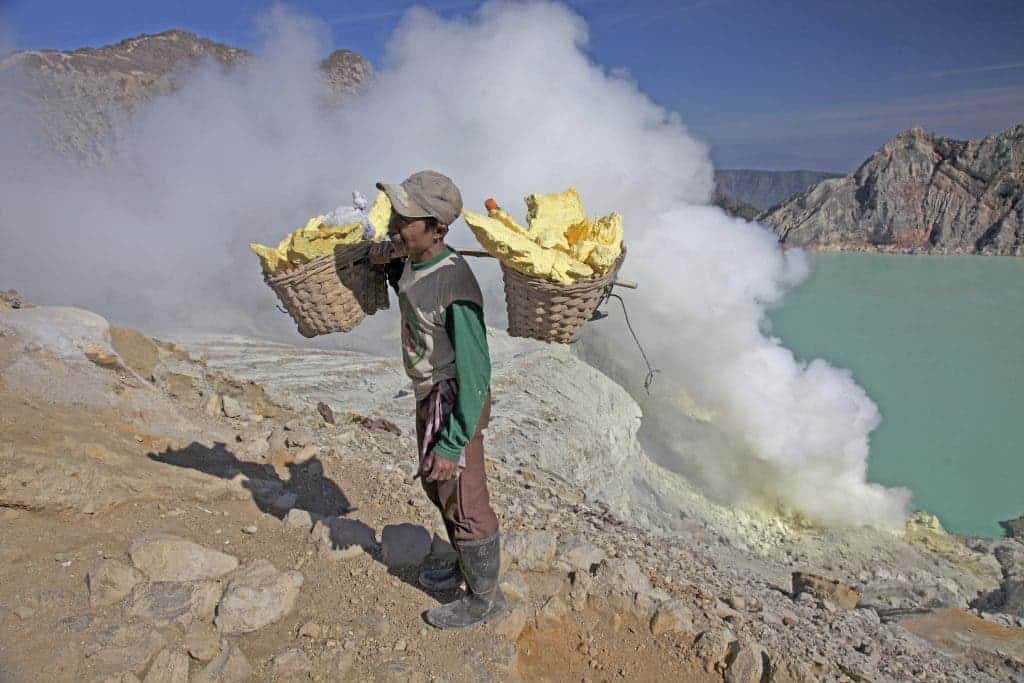
Whenever you think you have the worst job ever, you definitely should think about the sulphur miners from Eastern Java, the men who treat poisoned lungs, burns, scars and constant danger as part of their everyday living. Each day, a few hundred men go deep in the heart of the Ijen volcano, with the sole purpose of collecting yellow lumps of sulphur that solidify beside its acidic crater lake.
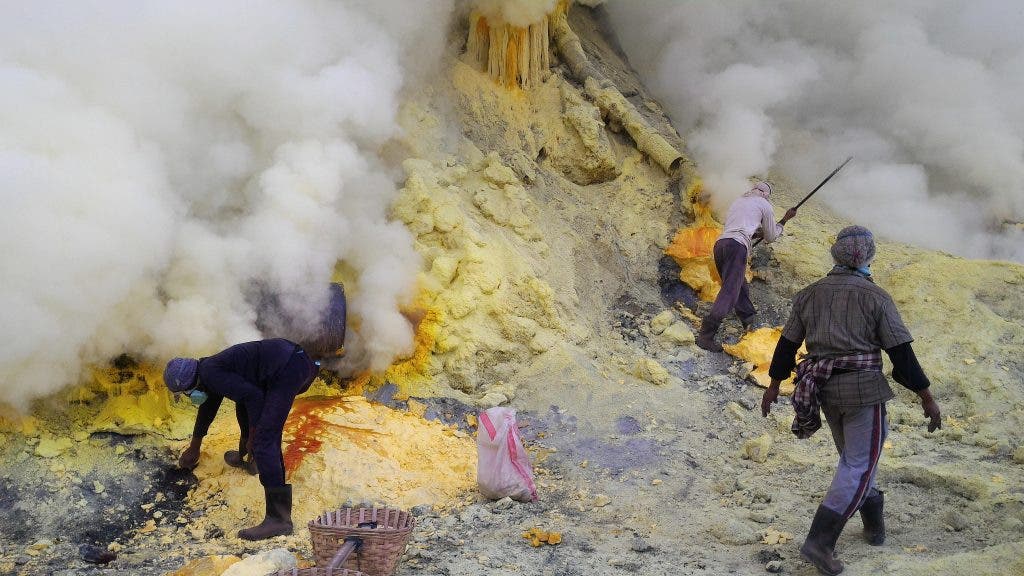
Just in case you’re wondering, sulphur has numerous uses, both inside Indonesia and outside: it is used to vulcanise rubber, make matches and fertiliser and even bleach sugar. Each day, they go up the mountain and gather 90 kg loads from the toxic lake, which they then have to carry back to a weighing station at the base of the volcano; and they do this several times per day.
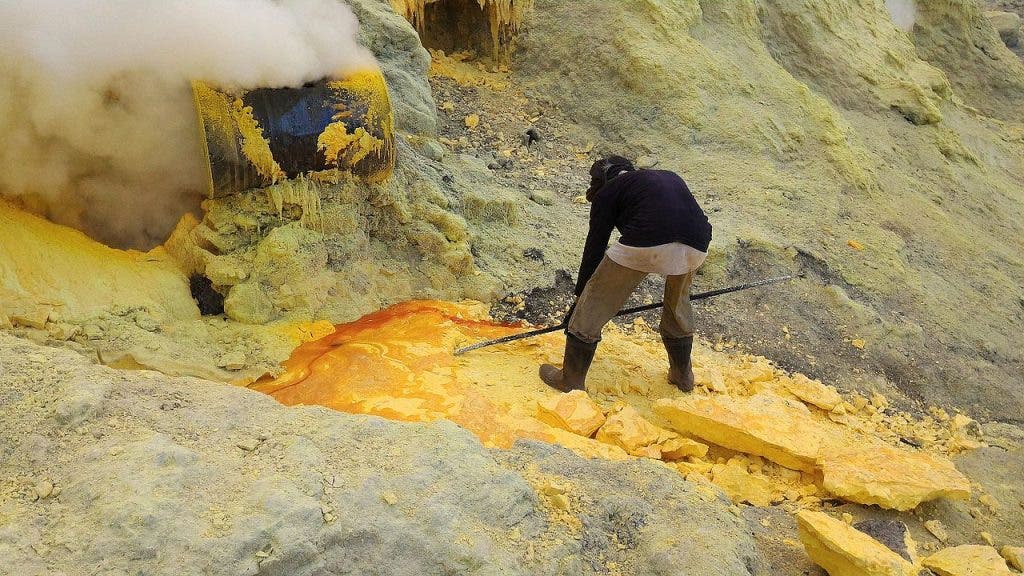
“There are many big mountains but only one gives us the sulphur we need,” says Sulaiman, 31, who has mined the crater for 13 years.
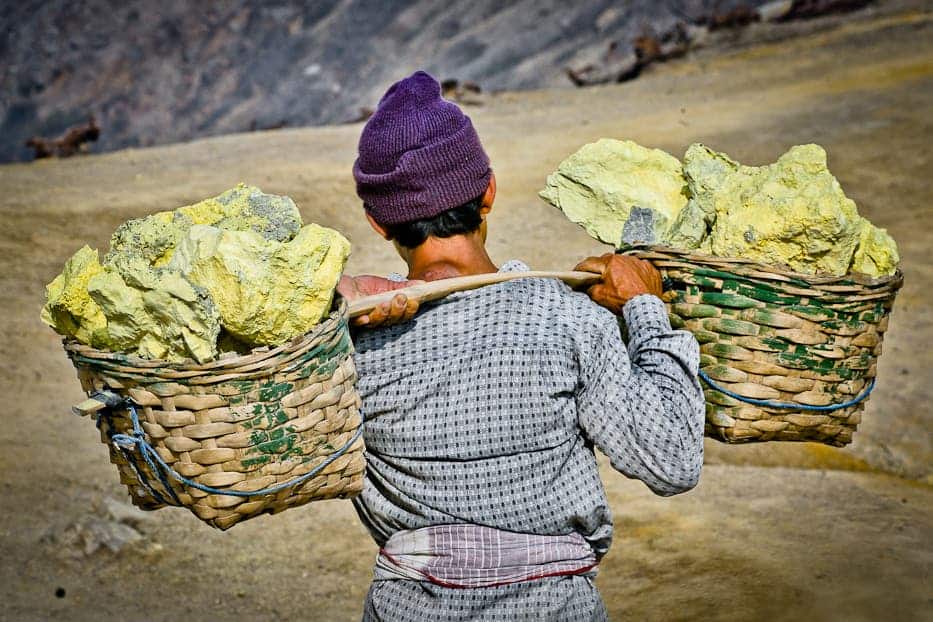
About protection, you really shouldn’t – gas masks or gloves would be nothing less than a luxury for these men, who get paid around 10-15$ per day. The only protection from the deadly gas is clothing. But deadly gases aren’t the only thing they have to be wary of. In the past 40 years, 74 miners have died because of fumes that can come from fissures in the rock, more specifically hydrogen sulphide and sulphur dioxide gases, which are so concentrated they can even dissolve teeth, let alone the other parts of the body.
This practice wasn’t so uncommon 200 years ago, but by now it is mechanized in pretty much every part of the world. Clive Oppenheimer, of Cambridge University explains:
“Until the late 19th Century, there were sulphur mines in volcanic countries such as Italy, New Zealand, Chile and Indonesia.”
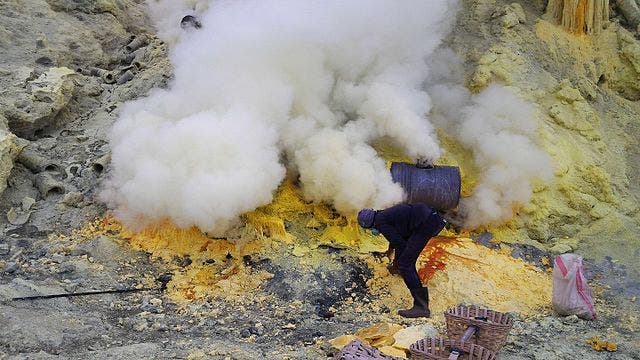
The work they do takes a harsh toll on their bodies; few of them live to grow old. However, their bodies have adapted, and most of them can hold their breath for several minutes; they also tend to develop amazing shoulder muscles from carrying baskets twice their bodyweight.
“Our families worry when we come here. They say working here can shorten your life,” says Hartomo, 34, a sulphur miner for 12 years. “I do it to feed my wife and kid. No other job pays this well,” adds Sulaiman.






